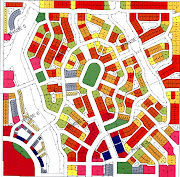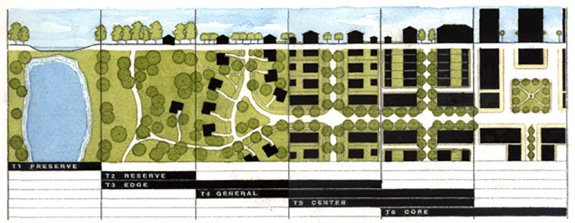Click here to refresh: http://www.newherbanism.blogspot.com/
"As the U.S. population tops 300 million, the country is losing 6,000 acres of open space to development a day, nearly four acres a minute."
"The sprawl is going to happen," says demographic trend-watcher Joel Kotkin. "You've got 100 million new people [since the U.S. topped 200 million in 1967]. They've got to go somewhere, and most don't want to live in the city. End of story."
Public opinion bears this out. Just 13 percent want to live in a city, 51 percent in a suburb, 35 percent in a rural community, according to a 2004 survey by the NATIONAL ASSOCIATION OF REALTORS®. "
If you look at the survey data, even the nice cities are losing population," says Kotkin. "It's San Francisco, Boston, and Minneapolis, not just Cleveland and Philadelphia. The population growth of even the most robust cities is much less than the surrounding areas." The key question, says Kotkin, is, "Do we manage this growth in an intelligent way and figure out how to make it environmentally benign?"
What many see as the best alternative is to create something they call edge cities or micropolitan areas, galactic cities, or technoburbs – largely self-contained communities with jobs for local residents, who wouldn’t have to commute long distances."
Source: Christian Science Monitor, Brad Knickerbocker and Daniel B. Wood (10/03/2006)
Comment: One of the attractive things about greenfield new urban development is that the increased density and mixed uses utilizes the land much more effectively than single purpose, low density development.
The country is "is losing 6,000 acres of open space to development a day, nearly four acres a minute" Much of this can be attributed to low density, conventional subdivision development. As I pointed out in a September 15, 2006 post here, Stratford Park , a 160 acre conventional subdivision to the west of the new traditional neighborhood on State Street, has 393 lots or 2.456 lots per acre. By comparison, the 160 acre State Street traditional neighborhood is designed to have 939 dwelling units. At the density of Stratford Park, it would take over 382 acres to provide 939 dwelling units. Thus it would take 222 MORE acres than the new traditional neighborhood on State Street will have for the same number of dwelling units.
Another way to look at it is that the increased density of new traditional neighborhood saves 222 acres from having to be developed. With land in the U.S. being developed at the rate of 4 acres per minute, the new traditional neighborhood on State Street stops the national development clock for about 56 minutes. Not a lot in the grand scheme of things, perhaps, but it does reveal what could happen if more communities were created according to the traditional neighborhood development model.
Yours for the increased density of the TND,
Herb
Wednesday, October 04, 2006
Subscribe to:
Post Comments (Atom)



No comments:
Post a Comment